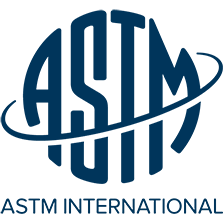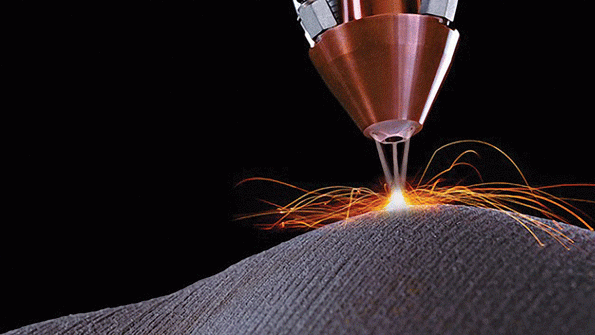Furthering 3D Printing Worldwide: ISO & ASTM International Create Additive Manufacturing Standards Development Structure
 There’s certainly a lot to be said for getting in at the beginning of something new and amazing like 3D printing—a realm that began with no rules because so few were previously engaging in it. But as the maker community and the industrial world grow at an accelerated rate, numerous issues have begun to arise from copyrighting issues to industrial standards and requirements.
There’s certainly a lot to be said for getting in at the beginning of something new and amazing like 3D printing—a realm that began with no rules because so few were previously engaging in it. But as the maker community and the industrial world grow at an accelerated rate, numerous issues have begun to arise from copyrighting issues to industrial standards and requirements.
As questions arise and larger companies begin pumping out 3D printed components, the need has been obviously for cohesion. And both the International Organization for Standardization (ISO) and ASTM International have stepped in to take care of business, creating the Additive Manufacturing Standards Development Structure. This will offer a comprehensive and much-needed framework that those involved in both additive manufacturing and 3D printing can use for technical standards.
 This new structure will offer a way to guide industry experts around the world as well as standards development organizations. They will be able to pinpoint gaps within the industry in regards to 3D printing as well as seeing that there is a central forum for standards so that efforts are not duplicated, wasting time and causing confusion. The Additive Manufacturing Standards Development Structure is meant to ensure cohesion, prioritize areas that need standardization, and encourage the use of the technology further and make it easier to use.
This new structure will offer a way to guide industry experts around the world as well as standards development organizations. They will be able to pinpoint gaps within the industry in regards to 3D printing as well as seeing that there is a central forum for standards so that efforts are not duplicated, wasting time and causing confusion. The Additive Manufacturing Standards Development Structure is meant to ensure cohesion, prioritize areas that need standardization, and encourage the use of the technology further and make it easier to use.
Three levels can be used:
- General standards (concept, common requirements, guides, safety)
- Standards for broad categories of materials like metal powder or processes like powder bed fusion
- Specialized standards that come into plan for more specific materials and processes or applications such as aluminum powders, varying types of extrusion, and uses in a range of industries.
“This structure will help experts worldwide interact in a more streamlined and meaningful way, leading to the integration and application of new technologies at an accelerated rate,” said Carl Dekker, president of MET-L-FLO Inc., and chair of ASTM International’s committee on additive manufacturing technologies (F42). “In the future, we could see even more benefits, such as uniform workforce training and a stronger ability to focus on constant quality improvement rather than potential confusion surrounding specifications.”
Approved by both F42 and ISO/TC261 during a July meeting in Tokyo, the structure shows the evolution of progress between the two organizations, having signed the Partner Standards Developing Organization agreement five years ago. With the new structure, they have worked together, examining development from the past to present and what they have in mind for the future.
“This coordinated approach to standards development in AM is crucial to building out robust standards at all levels,” said Jörg Lenz, collaborative projects coordinator at Electro Optical Systems and chair of ISO Technical Committee 261 on additive manufacturing (ISO/TC261). “Standards developers can see how this new structure allows them to come together, leading to further innovation in fields like aerospace, medical, and automotive, and also other benefits such as a platform for certification activities.”
The teams working together on this make it clear that this is meant to be a framework of standards and is not a confining structure for those creating the guidelines. A ‘companion guidance document’ is currently being developed as well.
ASTM is responsible for setting standards around the world, with over 12,000 standards currently in effect. The goal is to improve business standards, quality of products, and ultimately offer the best for consumers as they focus on commercial needs and the priorities of those buying products.
ISO is an independent organization that functions as a non-governmental entity throughout the world. They have 162 national standards bodies in the membership, all of which offer resources for sharing knowledge and expertise. To date, ISO has published over 21,300 International Standards and documents relating to nearly every industry. Discuss further in the ISO & ASTM Create AM Standards forum over at 3DPB.com.
Subscribe to Our Email Newsletter
Stay up-to-date on all the latest news from the 3D printing industry and receive information and offers from third party vendors.
You May Also Like
3D Printing Unpeeled: Orbex Investment, IndoMIM and HP, Ultrasonic Waves
INDO-MIM has bought three HP Metal Jet S100 printers, operating two in India and one in Texas. This is a win for HP because the company has deep experience in...
Seurat CFO Di Paola Shares Insights on Defying Industry Trends in 3D Printing
In an industry where 3D printing public companies are grappling with troubled earnings and workforce reductions, Seurat is defying market trends by increasing its workforce sevenfold, growing from 20 to...
AMCM Debuts 8-Laser Metal 3D Printer for Prometheus Rocket and Forges Partnership with Sintavia
EOS sister company AMCM has unveiled its upcoming M 8K laser beam powder bed fusion (PBF-LB) metal AM machine. It is expected to launch by the end of 2024. Building...
Daring AM: ArianeGroup Advances Europe’s Reusable Rockets with Successful Testfire
Despite setbacks in the global space industry, such as Relativity Space’s recent failure to launch a 3D printed rocket and the closure of Virgin Orbit, European Ariane rockets are gained...
































